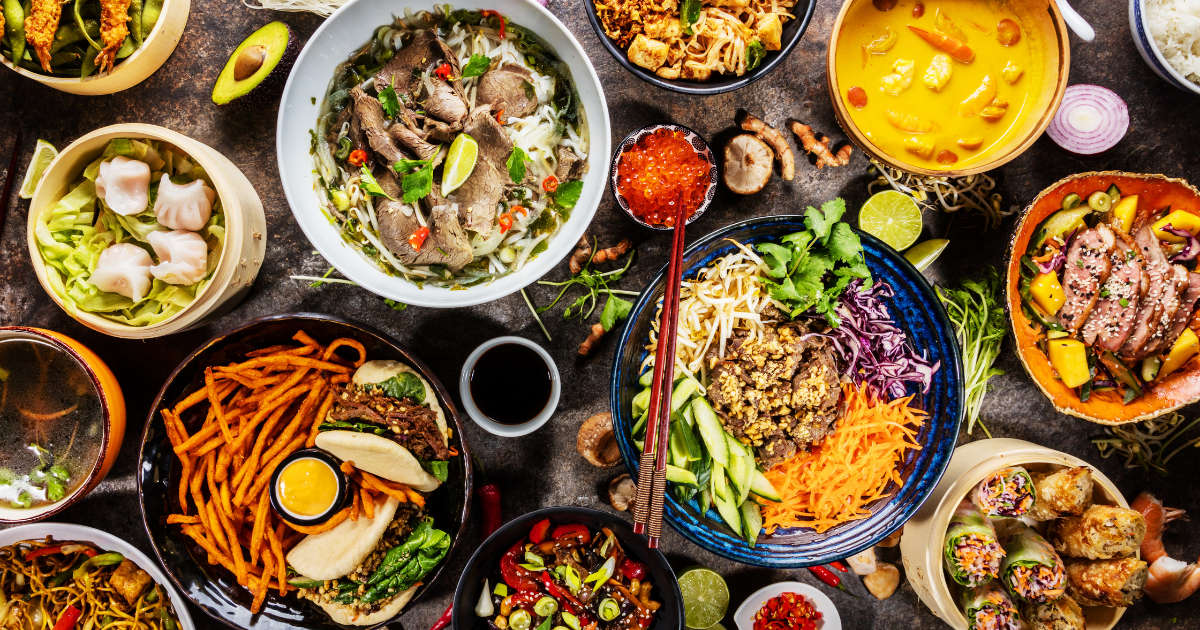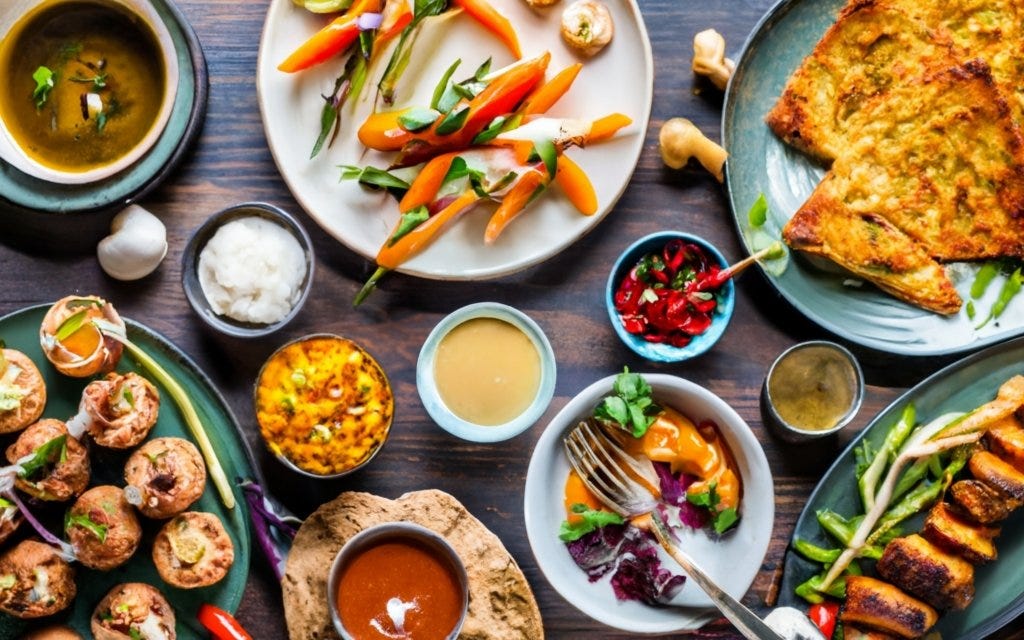Introduction
Indulge your taste buds and explore the world through its diverse culinary delights. Culinary Adventures Around the World promise a gastronomic journey like no other. From street food stalls to Michelin-starred restaurants, let’s navigate the global tapestry of flavors together.
Japan
Sushi and its Cultural Significance
Sushi, a culinary masterpiece that originated in Japan, has transcended its cultural roots to become a global sensation. Beyond being a delectable dish, sushi embodies the artistry and precision ingrained in Japanese culture. The combination of vinegared rice, fresh seafood, and seaweed creates a harmonious symphony of flavors and textures. Each piece reflects the dedication of sushi chefs to perfection, making it not just a meal but a work of art.
The cultural significance of sushi extends beyond its taste; it symbolizes Japan’s respect for nature and its commitment to balance. The emphasis on using fresh, seasonal ingredients pays homage to the country’s deep connection with the changing seasons. In a world that often rushes, sushi encourages mindfulness and appreciation for the moment.
For those delving into Japanese cuisine, understanding the cultural nuances of sushi adds a layer of appreciation to the dining experience. Whether enjoying traditional nigiri, sashimi, or modern variations like sushi rolls, each bite tells a story of tradition, innovation, and the pursuit of culinary excellence.
Culinary Adventures Across Different Regions
Ramen, a soul-warming noodle soup, stands as a testament to Japan’s regional diversity. While it has become a global comfort food, the varieties of ramen across different Japanese regions offer a fascinating exploration of local tastes and preferences.
In Hokkaido, you’ll encounter Miso Ramen, featuring a hearty broth made from fermented soybean paste. Travel south to Tokyo, and Shoyu Ramen takes center stage, showcasing a soy sauce-based broth that embodies the city’s vibrant energy. Further south in Kyoto, the elegant Shio Ramen, known for its clear and light broth seasoned with salt, reflects the city’s historical refinement.
Each region’s ramen tells a culinary tale influenced by geography, climate, and local ingredients. For food enthusiasts, embarking on a ramen journey through Japan unveils a rich tapestry of flavors, each bowl a unique expression of regional identity.
India
Diverse Flavors of Indian Cuisine
Indian cuisine, a kaleidoscope of flavors, aromas, and colors, is a culinary journey like no other. From the robust spices of North Indian dishes to the coconut-infused coastal delicacies of the South, the diversity of Indian cuisine mirrors the country’s cultural tapestry.
In the North, dishes like Chicken Tikka Masala and Tandoori Roti showcase the bold flavors of spices like cumin, coriander, and garam masala. As you venture South, the cuisine takes a coconutty turn, with dishes like Dosa and Coconut Fish Curry highlighting the region’s tropical influence. Meanwhile, the Western state of Gujarat introduces a vegetarian haven with Dhokla and Undhiyu, emphasizing the versatility of Indian vegetarian cuisine.
Exploring Indian cuisine is a sensory adventure, where each bite tells a story of centuries-old culinary traditions and the fusion of diverse regional influences. From the fiery curries of Punjab to the tangy delights of Maharashtra, the flavors of India are an endless exploration for the palate.
Popular Street Food and Regional Specialties
Indian street food is a vibrant and integral part of the culinary landscape, offering a quick and delightful way to experience the country’s diverse flavors. Whether it’s the iconic Chaat with its medley of sweet, sour, and spicy tastes or the aromatic and flavorful Biryani found in every region, street food reflects the heart and soul of India’s culinary creativity.
Each region boasts its own array of street food specialties. In Mumbai, the bustling street corners are adorned with Vada Pav, a spicy potato fritter sandwich, while Kolkata takes pride in its Kathi Rolls, unleashing a burst of flavors with every bite. The streets of Delhi offer Golgappa, a popular snack featuring hollow puris filled with spicy tamarind water, chickpeas, and potatoes.
Adding to the culinary adventure are regional specialties like Kashmiri Rogan Josh, Bengali Machher Jhol (fish curry), and Rajasthani Dal Baati Churma. These dishes not only represent regional diversity
Italy
Pasta beyond spaghetti and meatballs
When it comes to Italian cuisine, pasta is undeniably a star. However, the realm of Italian pasta extends far beyond the familiar spaghetti and meatballs. Italy boasts a rich tapestry of pasta varieties, each with its unique shape, texture, and purpose. From the elegant strands of angel hair to the comforting embrace of fusilli, the diversity of Italian pasta caters to every taste and culinary imagination.
Exploring Italian pasta is a journey through traditions, with regional specialties that showcase the country’s culinary diversity. In Emilia-Romagna, the birthplace of tagliatelle and tortellini, you’ll experience the delicate artistry of handmade pasta. Head south to Campania, and you’ll encounter the rustic charm of orecchiette, perfectly suited for capturing rich, hearty sauces. From the northern regions to the sun-soaked south, Italy’s pasta landscape is an ode to the country’s cultural and gastronomic heritage.
Regional variations in pizza
Pizza, an Italian export beloved worldwide, is a canvas that reflects the diverse landscapes and flavors of Italy. While the classic Margherita has earned its place in culinary history, delving into the regional variations of pizza unveils a fascinating spectrum of tastes and textures.
In Naples, the birthplace of pizza, you’ll savor the simplicity of a Neapolitan pizza, with its thin, chewy crust and minimalistic toppings. Journey to Rome, and you’ll encounter the rectangular wonders of Roman-style pizza, where a crisp, thin crust plays host to a myriad of toppings. Head further north to Liguria, and you’ll be introduced to the unique delights of focaccia-based pizza, a testament to the adaptability and creativity ingrained in Italian culinary tradition.

France
Exploration of French pastries
French pastries are synonymous with decadence and precision, a true art form that has captivated taste buds worldwide. Beyond the iconic croissant and éclair, the world of French pastries is a treasure trove of delicate layers, exquisite fillings, and artistic presentations.
Indulge in the flaky, buttery layers of a mille-feuille, where puff pastry meets velvety pastry cream in a symphony of textures. Traverse the regions of France, and you’ll encounter the delightful brioche from Normandy, a buttery bread that doubles as a heavenly pastry. From the intricate pleasures of a tarte Tatin to the airy perfection of a religieuse, the exploration of French pastries is a culinary journey through patisseries that are both timeless and ever-evolving.
You can read more about Culinary Adventures by clicking here!
The art of cheese and wine pairing
No exploration of French gastronomy is complete without diving into the sophisticated art of cheese and wine pairing. France, with its myriad cheese varieties and world-renowned vineyards, offers an unparalleled sensory experience that elevates the enjoyment of both cheese and wine.
Embark on a sensory adventure as you pair the creaminess of Brie with the crisp acidity of a Chablis or the robust flavor of Roquefort with the sweetness of Sauternes. Each region in France contributes its unique cheeses, shaped by the local terroir and centuries-old craftsmanship. Understanding the delicate dance between flavors, textures, and aromas enhances not only the appreciation of French cheese and wine but also provides a glimpse into the cultural significance of these gastronomic traditions.
Morocco
Tagines and Their Unique Flavor Profiles
Moroccan cuisine is a tapestry of rich flavors, and at the heart of it lies the iconic tagine. These slow-cooked stews, named after the conical earthenware pot they are cooked in, offer a unique and tantalizing experience for the taste buds. The combination of savory meats, such as lamb or chicken, with a symphony of spices like cumin, coriander, and cinnamon, creates a sensory journey that is quintessentially Moroccan.
The slow-cooking process allows the ingredients to meld together, resulting in tender, succulent meats infused with the essence of aromatic spices. The tagine’s distinctive shape ensures that the condensation drips back into the dish, intensifying the flavors and keeping the ingredients moist. This culinary marvel not only delights the palate but also showcases the artistry and depth of Moroccan gastronomy.
Influence of Spices in Moroccan Cuisine
Moroccan cuisine is renowned for its bold and aromatic use of spices, which play a pivotal role in creating dishes that are both complex and balanced. The spice trade has historically shaped Morocco’s culinary landscape, and the country boasts a diverse array of spices that elevate its dishes to new heights.
Cumin, coriander, saffron, and paprika are just a few of the spices that contribute to the depth of Moroccan flavors. Each spice has a specific role, whether it’s imparting warmth, earthiness, or a hint of sweetness. The meticulous blending of these spices is an art form passed down through generations, making Moroccan cuisine a true reflection of the country’s cultural heritage.
Incorporating these insights into your culinary journey will transport you to the vibrant markets of Morocco, where the air is filled with the heady aroma of exotic spices, promising a gastronomic adventure like no other.
Off-the-Beaten-Path Destinations: The Hidden Gems
Frequently Asked Questions (FAQs)
Q: What makes Culinary Adventures Around the World unique?
Embarking on a global culinary journey exposes you to a myriad of flavors, techniques, and cultural nuances. It’s a passport to understanding the world through its diverse cuisines.
Q: How can I recreate international dishes at home?
Bring the world to your kitchen by exploring recipes, attending cooking classes, and sourcing authentic ingredients. Immerse yourself in the culinary traditions you wish to replicate.
Q: Are Culinary Adventures expensive?
Not necessarily. Street food adventures can be budget-friendly, offering a taste of authenticity without breaking the bank. High-end dining experiences, while pricier, provide a different level of culinary artistry.
Q: Which country offers the best street food?
Choosing the best street food is subjective, but cities like Bangkok, Istanbul, and Mexico City are renowned for their vibrant street food scenes.
Q: How can I navigate dietary restrictions while traveling for culinary adventures?
Researching ahead, communicating dietary needs, and seeking local advice can help navigate dietary restrictions. Embrace the challenge, and you’ll discover new and delicious options.
Q: Any tips for a first-time culinary traveler?
Start with an open mind and palate. Be adventurous, try local specialties, and engage with locals to uncover hidden gems. Embrace the unexpected, and your culinary adventure will be unforgettable.
Conclusion
Embark on Culinary Adventures Around the World to taste the world’s richness on a plate. From the aromatic spices of Asia to the refined tastes of Europe, each bite is a journey, and each meal is a chapter in the global culinary story. Bon appétit!

